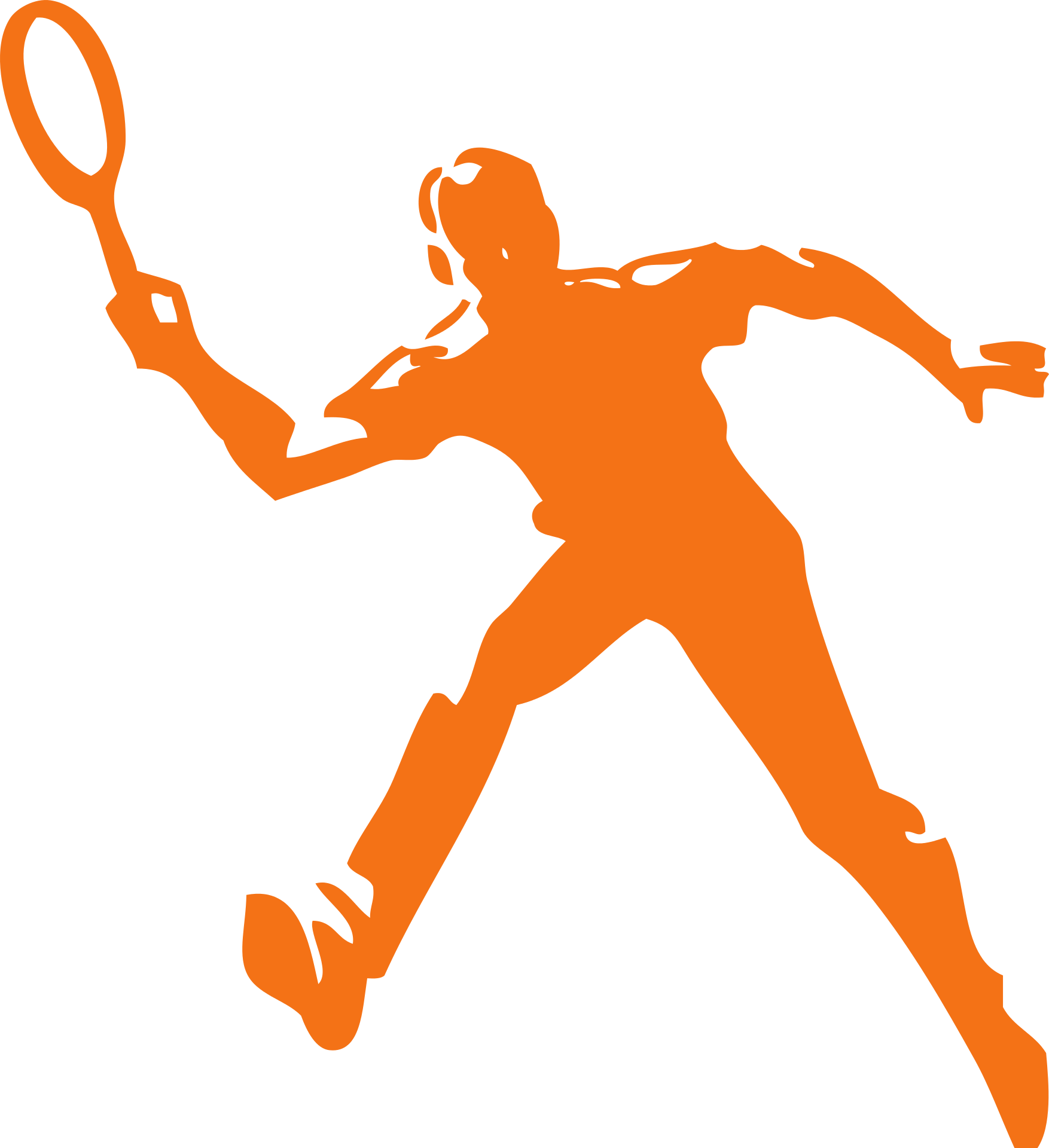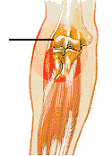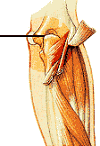Tennis- und Golfer’s elbow
About 100 years ago physicans diagnosed the tennis elbow (lateral epicondylitis) for the first time. Nowadays more than fifty percent of all tennis players are falling sick with a tennis elbow. Nowadays more than fifty percent of all tennis players are falling sick with a tennis elbow. Nevertheless these are only 5 percent of all persons suffering from a tennis elbow. Two similar disease patterns are easily mixed up with the tennis-elbow, the golfer’s elbow and the bursitis. Subsequently you come to know, what a tennis elbow is exactly and which possibilities of therapy and preventive measures exist.
Primarily we want to give you a survey about the different diseases:
Lower arm muscles and frayed tendons at the lateral epicondyle
Tenniselbow is characterised by small tear lesions within the tendons and in the muscle tissue of the arms. But also when the initial injury is cured, tears my occur again at the affected areas. These may result in the formation of a rough, granulate-type tissue and deposits of calcium in the surrounding tissue. During the course of the disease the protein collagene which causes inflammation is released in the injured areas. Due to this the arising pressure can cut off the blood supply and disconnect the radial nerve. This radial nerve is one of he most important for the neuronal control of the hand and arm muscles. The tendons connecting the muscles with the bone do not receive the same amount of oxygene and blood supply like the muscles and therefore heal very slowly. This is one of the causes why most tennis elbow diseases are cured widely within 6 to 12 weeks, but some cases drag on for years. Many medical books treat the tennis elbow as a form of inflammation of the tendon sheathes (tendinitis) being the case frequently. But if the muscles and bony parts of the elbow are involved, one talks about an epicondylitis. If the pain is stronger on the back side of the elbow joint than on the external side of the lower arm, a bursitis may be present. This develops, when the bursae in the joint get inflamed. Never ever the swelling is a symptom for a tennis elbow. If this occurs, diseases like arthritis, gout or similar may be present.
Therapy
Normally the therapy takes place conservatively by prescription of orthopaedic devices, which relieve the painful areas functionally. This means despite a certain “immobilization” to preserve the function of the participating joints widely without restricting the mobility essentially.In case of persistent complaints a selective TLA (that is infiltration anaesthesia such as procaine) in the area of the affected tendon origin aponeurosis can diminish or stop the pain with reasonable risk. Only in rare cases operative measures like the partial cutting of tendons and the obliteration of the local nerve ends by electrocoagulation are necessary.






